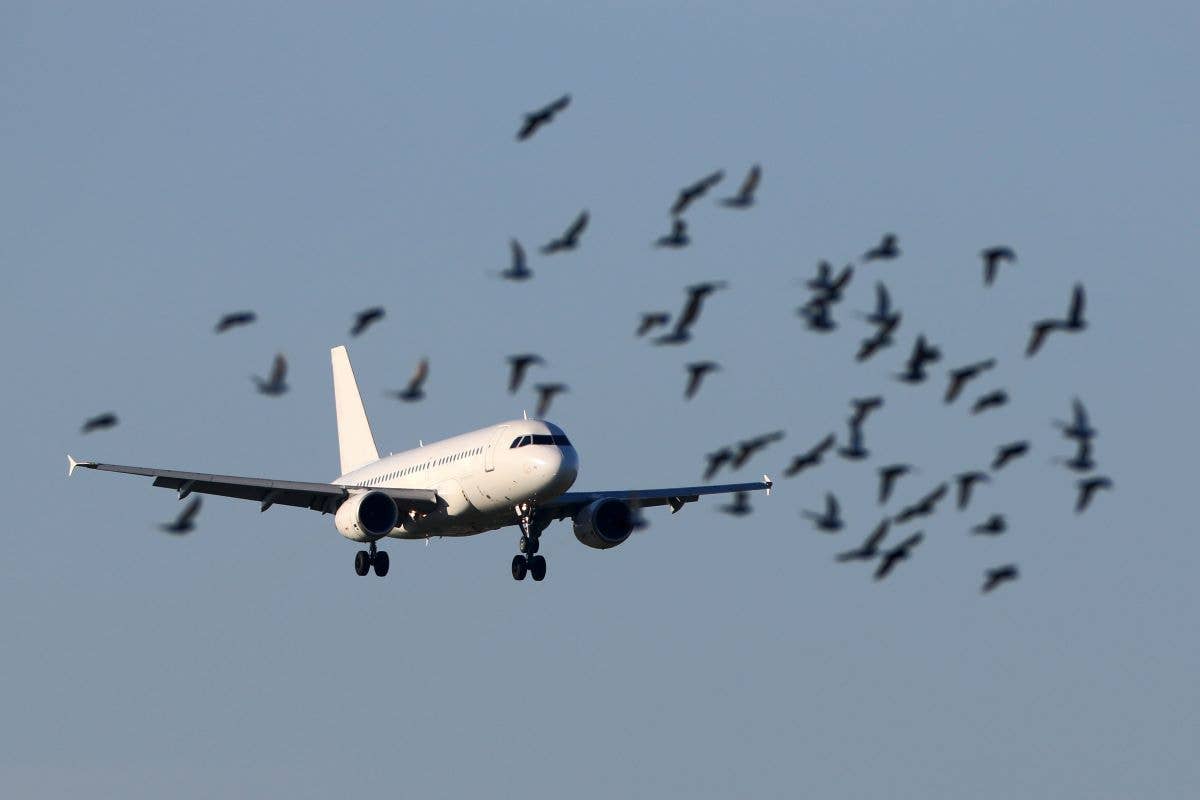FAA Seeks Public Comment on Wildlife Strikes
The proposed advisory circular reduces the minimum acceptable size for reporting animal collisions.

When it comes to bird strikes, authorities want to know what kind of animal was hit and where the collision took place, including the altitude. [Credit: Shutterstock]
"Uh-oh!"
This is not a phrase you want to hear in an airplane, but that was what the learner said when we encountered the red-tailed hawk on downwind. Before myself or the learner could react, the bird, flapping wildly and heading toward us belly first, struck the Cessna 172 on the left side of the windscreen where it meets the wing. A shudder went through the airplane as the bird—or what was left of it—tumbled over the aircraft.
"Your airplane!" the learner cried. I grabbed the controls while he announced we had a bird strike and were making a precautionary landing.
I gingerly checked the control surfaces and we looked for damage. Tail. We landed without incident. With the exception of a slight dent, a little blood and some pin feathers stuck to the wing, the aircraft was unscathed. The challenging part was figuring out what we had to do next—was the red-tailed tail hawk endangered? Did we have to notify someone?
These are common questions pilots often ask after a wildlife encounter, and soon we may have better answers, as the FAA is asking for public comment on Draft Advisory Circular (AC) 150/5200-32C, Reporting Wildlife Aircraft Strikes.
According to the request for comment, the purpose of the AC is to explain the importance of reporting collisions between aircraft and wildlife, how to report a strike, what happens to the report data, how to access the FAA’s Wildlife Strike Database (NWSD), and the agency’s feather identification program.
The proposed AC reduces the minimum acceptable size for reporting strikes, from 1 kilogram (2.2 pounds) to 1 pound, with the exception of snakes, which are now reportable if they are at least a foot in length.
There are new considerations for reporting multiple small terrestrial animals, such as small, freshwater turtles (terrapins) in a single incident.
Pilots are reminded that if they experience a strike with an animal listed as threatened or endangered at a state or federal level, they should report the incident, but only if it is fresh.
There is a proposal to remove the mail-in form of reporting. Most strike reports were submitted electronically, except when using the available Form 5200-7 combined with the remains of the bird strike (known as “snarge” samples) sent to the Smithsonian Institution Feather Identification Lab.
When it comes to bird strikes, authorities want to know what kind of animal was hit and where the collision took place, including the altitude. This information can help wildlife officials determine if migratory patterns have shifted. For example, the red-tailed hawk we hit was 1,000 feet agl and a bit far north, but that was “normal” for its species.
Comments will be accepted through June 12, 2023.
The draft Advisory Circular (AC) 150/5200-32C, Reporting Wildlife Aircraft Strikes may be viewed here. All comments should include a justification for the recommended modification.
As for the outcome of the bird strike we had that day, I spent about 20 minutes with the airport manager filling out a wildlife strike report online. There were details to note, such as what type of bird it was, as well as the altitude and location in the traffic pattern where the strike happened.
The FAA keeps track of the species of birds and mammals hit by aircraft as a means to evaluate risk.

Sign-up for newsletters & special offers!
Get the latest FLYING stories & special offers delivered directly to your inbox






